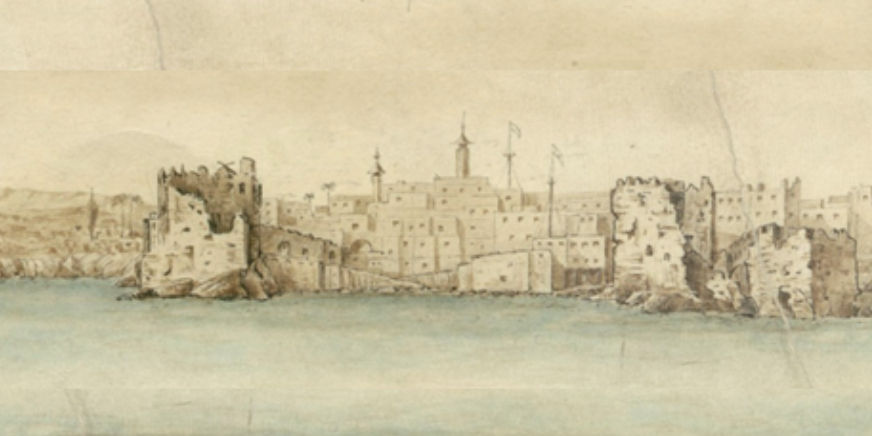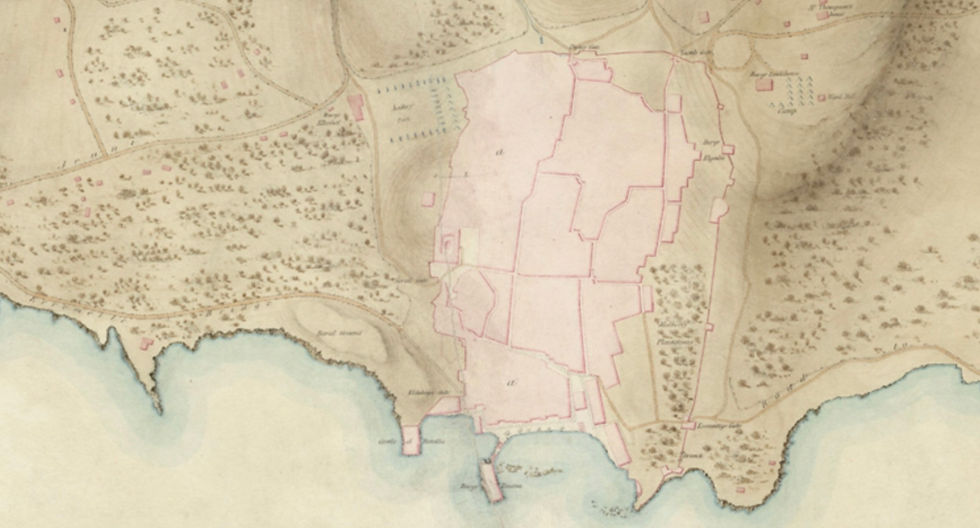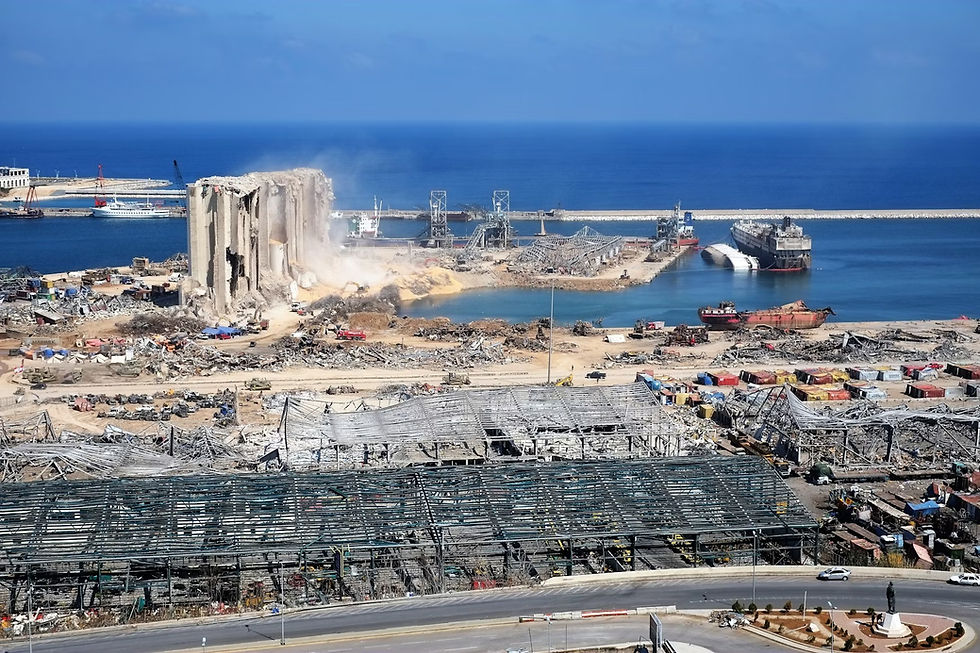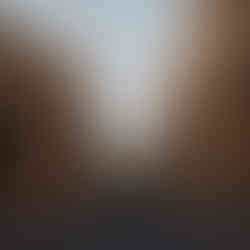Port, Power, and Memory: Rethinking Beirut’s Legacy
- wiedesignservices5
- Jul 19
- 4 min read

A layered dialogue between land and sea, memory and transformation!
Few urban landscapes embody the tension between continuity and rupture quite like Beirut. At the heart of this city’s evolving identity lies its port—a threshold, a lifeline, and at times, a frontier. This blog traces the complex and shifting relationship between Beirut and its port, revealing how history, policy, and conflict have reshaped this bond across generations.
Early Beirut: A Port-Centric City
In its earliest form, Beirut was a compact, walled settlement—a city that faced the sea both physically and existentially. The port was not a backdrop but a central actor, vital to the city's livelihood. Trade routes animated its shores, and daily life unfolded in tandem with the rhythms of the harbor. The city’s scale and structure were shaped by this proximity, forming a tight, symbiotic relationship between maritime activity and civic life.
Ottoman Era: Expansion, Commerce, and Connection
The 19th century marked a decisive turn for the city. Under Ottoman rule, land ownership reforms catalyzed urban expansion beyond the ancient walls. The port’s significance deepened as Beirut emerged as a key node in regional trade. Structures like Khan Antonin Bey—a vibrant commercial caravanserai—rose near the waterfront, symbolizing the fusion of local enterprise and international exchange. The depth of the sea made docking efficient, further integrating the port into the city’s growing spatial and economic fabric.

19th-Century Beirut under Ottoman Rule: Land reforms spark urban expansion beyond the old city walls, elevating the port as a vital hub in regional trade networks.
French Mandate: Modernization and Urban Linkages
Colonial administration brought with it a reimagining of urban form. The French Mandate period saw infrastructural interventions that stitched together the old and new Beirut. The tramway system enhanced access to the port, with Martyrs’ Square emerging as a powerful urban node. This era introduced a modernist vision of the city—more rational, more connected—yet also more segmented. While connectivity improved, it foreshadowed the tensions between privatization and public access that would intensify later.
Post-Independence: From Visibility to Obstruction
With independence in 1943, Beirut entered a phase of industrialization and national identity-building. The port remained economically essential, but its visual and spatial prominence began to erode. Projects like the Petit Serail, positioned to assert civic authority, inadvertently severed key sightlines to the sea. This architectural gesture was emblematic: the port was no longer Beirut’s heart, but increasingly an infrastructural backdrop, hidden from view and mind.
Civil War and its Aftermath: Fragmentation and Luxury Urbanism
The Lebanese Civil War (1975–1990) left deep scars. The port area—once a space of flow and encounter—became a zone of division. Post-war reconstruction, led by private developer Solidere, sought to reinvent the city’s core. The waterfront was recast as a luxury destination, with promenades, towers, and exclusive enclaves. While visually spectacular, this transformation raised urgent questions around displacement, public memory, and urban justice. Who was the new Beirut being built for?
Post-Civil War Downtown Beirut: A cityscape marked by reconstruction, where historic memory meets rapid redevelopment.
From Aspiration to Tragedy: The 2020 Port Explosion
On August 4, 2020, a devastating explosion at the port shattered lives, buildings, and the fragile equilibrium of a city already grappling with economic collapse. This tragedy did more than destroy infrastructure—it reawakened Beirut’s collective memory. It revealed the neglect of public institutions, the dangers of opaque planning, and the unresolved trauma embedded in the city’s portscape.
The explosion marked not just an end, but a reckoning—a moment that demands new thinking about urban resilience, equity, and responsibility.

Beirut Port Explosion, August 4, 2020: A moment of devastation that shattered the city’s core, exposing deep systemic failures and igniting a collective call for justice and reform.
Timeline: The Port-City Relationship in Six Stages
Stage | Symbol | Period | Defining Characteristics |
Primitive Port City | 🌊 | Pre–mid-19th Century | Walled city tightly integrated with the port; maritime trade central to daily life. |
Expanding Port City | 🚢 | Mid-19th Century | Urban sprawl beyond walls; economic growth tied to port’s capacity and accessibility. |
Modern Industrial Port-City | 🏭 | 1943–1951 | Port as a major employment center; beginning of visual separation from the city fabric. |
Renewal of Port-City Links | 🚋 | 1950–1975 | Infrastructure upgrades reconnect the city; rising urban planning tensions. |
Post-War Waterfront Redevelopment | 🏢 | 1975–1990 | Civil War divides the city; waterfront redeveloped for elite consumption post-conflict. |
Urban Growth & Exclusion | 🏙️ | 1990–2020 | Gentrified seafront; access restricted; port becomes increasingly peripheral to city identity. |
Beirut Explosion Aftermath | 💔 | 2020–Present | Catastrophe triggers calls for justice, transparency, and inclusive urban regeneration. |
The Future of the Port–City Interface
As Beirut looks to rebuild, the port is no longer just an infrastructural concern—it is symbolic ground. Architects, urbanists, and civil society must now ask: Can the city reclaim its waterfront as a space of memory, equity, and inclusion?
The future lies not in severing the city from its port, but in cultivating a renewed civic relationship—one that honors Beirut’s maritime past while imagining a more accessible, participatory urban horizon.
At WiE Design, we believe in designing for memory, community, and transformation. Beirut’s port-city story reminds us that architecture is never neutral—it reflects the values we choose to build into our cities.
How should the future city embrace its edges? We’d love to hear your reflections. Join the conversation or reach out to collaborate.







Comments